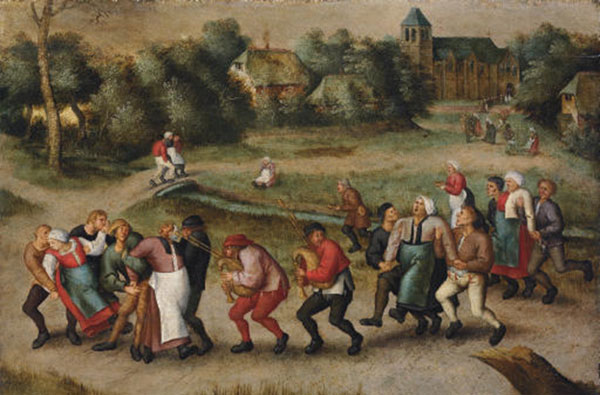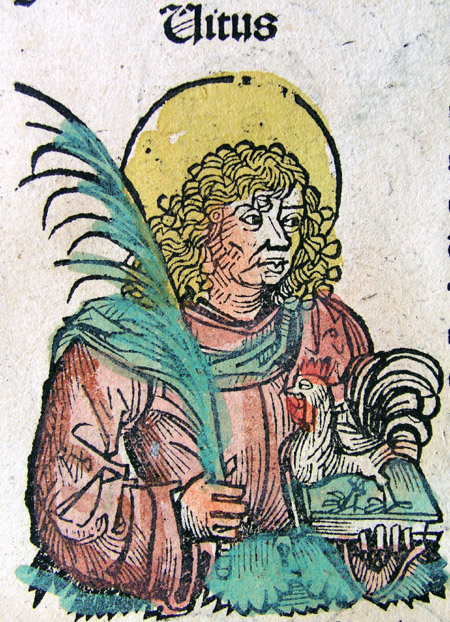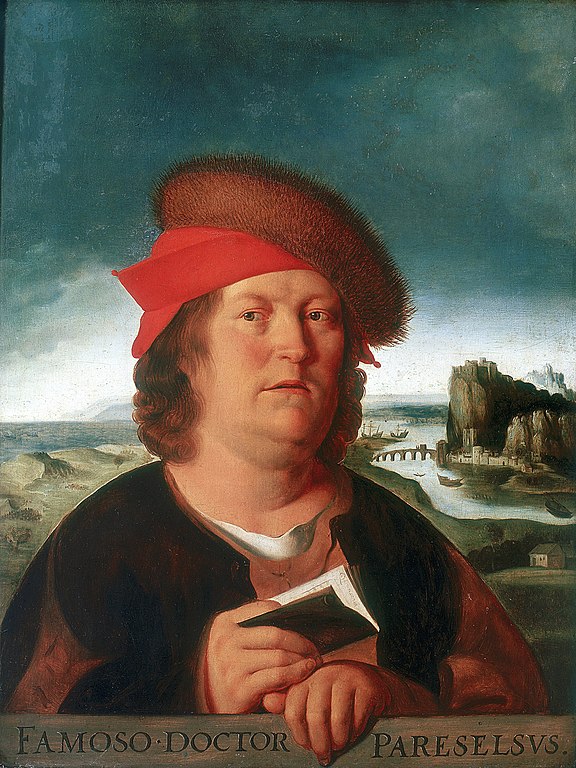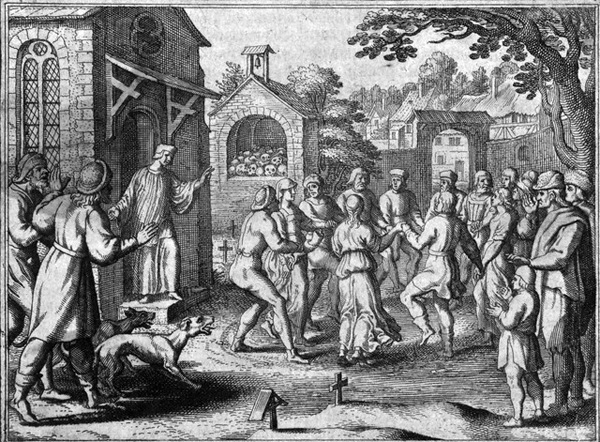When it comes to plague outbreaks in Europe, your mind probably doesn’t immediately jump to a so-called dancing plague. Yet that’s precisely what seemed to grip Strasbourg, France in the summer of 1518. Townspeople started dancing, seemingly against their will, and couldn’t stop for almost a month.
Hundreds died of exhaustion, with contemporary commentators blaming the wrath of St Vitus. More recently, people have suspected ergot poisoning, religious fervour, or mass psychogenic illness. So what exactly happened, and how does it relate to folklore? Let’s find out!
Our seventh European City visit will be slightly different from the preceding six. Where the earlier instalments included a variety of ghost stories or legends, this one will focus solely on the Dancing Plague of 1518. It’s certainly become a legend in its own right.
The Dancing Plague
In July 1518, Frau Troffea walked into a square and started dancing uncontrollably. People gathered to watch, surprised that she seemed unable to stop. Frau Troffea danced for almost a week, pausing only when exhaustion forced her to until the authorities took her away.
By the time they did so, dozens more of Strasbourg’s citizens had joined Frau Troffea’s plight. In some sources, there were 34. Others say the crowd swelled to 400 by the end of July (Big Think 2023). These people danced themselves to the point of exhaustion in the square.

Mystified by this unprovoked chaos, the city burghers consulted doctors for a proposed treatment plan. Given this was the 16th century, the doctors assumed they must have overheated blood. While bleeding people would normally be the treatment, they proposed something radical and even less scientific.
The ‘Treatment’ and its Effects
The victims needed even more dancing. As their logic ran, those affected could ‘dance’ the problem out of their system.
They cleared a grain market, hired musicians, and moved the unwilling dancers into the space. Bear in mind this all occurred during the hottest months of the year, and in full sun. You won’t be surprised to hear many people fell unconscious and died from exhaustion. In some chronicles, 15 people died every day in this fashion (Big Think 2023).
Since the doctors’ diagnosis of “overheated blood in the brain” seemed wrong, the councillors decided the cause must be religious. They banned dancing in public and sent the most badly affected dancers to a shrine for St Vitus. The clergy put the dancers’ feet into red shoes and anointed their feet with holy oil and holy water. In some versions of the legend, they walked them around a statue of the saint until they stopped dancing. In others, they laid the dancers beneath a wooden carving of St Vitus. As the cure began to work, the council sent more dancers to the shrine from Strasbourg.
Who was St Vitus?
Vitus was the son of a senator in Sicily, and he converted to Christianity at 12. At one point his father apparently saw angels in front of Vitus, and his father went blind. Vitus prayed for him, and this father regained his sight (Eftychiadis 2001: 14). Valerian, Sicily’s administrator, got wind of Vitus’ miracles and decided to test his faith. He failed, but Vitus still fled to Rome with his tutor and servant.

He managed to cast an evil spirit out of Emperor Diocletian’s son, apparently by laying his hands on the son’s head. Vitus refused to make any sacrifices to the gods so the Emperor decided he’d cured his son through sorcery. The Emperor then subjected Vitus to a range of tortures, although Vitus escaped during a storm. He returned to Lucania, apparently guided by an angel, although he died there following his ordeal.
At least, that’s one version of the story (Catholic Online). Other accounts say Emperor Diocletian had him thrown into a cauldron of boiling oil. St Vitus became the patron saint of dancers, actors, and those suffering from epilepsy or Sydenham’s chorea, otherwise known as St Vitus’ Dance. Dr A C Eftychiadis describes St Vitus as “the patron saint of neurological disorders” (2001: 14). The association of Vitus with the head through curing his father’s blindness and laying his hands on the Emperor’s son would support that. People might also invoke his protection during storms. His feast day is June 15.
Possible Causes
No one knows what caused the outbreak, especially since no one seemed to dance of their own volition.
But people had theories. That old favourite, ergotism, took the blame for a while. Ergot grows on damp rye and is the source of ergotamine, which provides similar psychoactive effects to LSD (Levy 2011: 58). Ergot poisoning most often leads to confusion, trembling limbs, and vertigo. It sometimes causes a burning sensation in the limbs and gangrene, known as St Anthony’s Fire (Inkwright 2021: 83).
So while ergot poisoning does induce twitching and hallucinations, it’s unlikely sufferers would have danced for days on end. Nowadays, there are treatments for ergot poisoning, even if there is no specific antidote (Levy 2011: 58). It’s also unlikely that everyone afflicted had eaten the same foodstuffs, and the fact the outbreak happened in a staggered way also makes ergot unlikely as a cause.
Religious fervour even came under suspicion at one point, but too many observers noted the dancers’ inability to stop dancing. Some witnesses described them as not seeming to be fully conscious (Waller 2009).
This leaves us with one other possibility.
Mass Psychogenic Illness
That leaves us with mass hysteria, which is now called mass psychogenic illness. So where on earth would this come from? Well, there had been dancing outbreaks sporadically in the previous centuries, and they nearly always happened in settlements near the River Rhine. It’s fairly understandable since news would travel along the river. Ideas also travelled, and in this case, it was an idea that St Vitus would make sinners dance as punishment.
It probably didn’t help that two decades before the outbreak, the Strasbourg cleric Sebastian Brant claimed dance and sin were the same thing, and blamed Satan for dancing. Had his words taken root in the cultural unconsciousness of Strasbourg?
Enter Paracelsus.
Paracelsus didn’t think so. Most famous for his early work in chemistry and medicine, Paracelsus was also the same thinker who named the ‘creatures’ that inhabit the elements. That’s salamanders, undines, gnomes, and sylphs. But he also thought the dancing plague had an earthly origin and little to do with St Vitus or divine punishments.

He thought a person could develop “laughing veins”, and the sensation they produced would force them to move until the blood calmed (Jana 2022). It’s worth noting he did also consider that women or minstrels were most susceptible to the dancing plague and that such a plague was the consequence of a sinful life, rather than a divine punishment for it (Miller 2017: 157).
Though he did coin the term choreomania for these dancing outbreaks. For Paracelsus, imagination was more of a problem than divine intervention, which does take us closer to mass psychogenic illness.
Mass psychogenic illness can be further divided into two types – mass anxiety hysteria and mass motor hysteria. The former sees a mass expression of anxiety following a perceived (but false) threat. So in the West, people might faint, hyperventilate, or feel nauseous after fearing exposure to poison. If the fear is not treated as a credible one, it normally subsides after a few days. Mass motor hysteria sees psychological tension manifest through dissociation or psychomotor activities. This would include things like dancing mania or possession crises (Waller 2009).
Some people have even pointed to the behaviour of the girls during the Salem witch trials as potentially being an occurrence of mass psychogenic illness (Waller 2009). It’s certainly a better candidate than ergot poisoning, which was blamed for a while.
Belief and Behaviour
Part of the problem with belief is that it can often affect our behaviour – and not always in a good way. People adhere to culturally prescribed ideas about how people should behave. John Waller gives the example of European convents in which nuns might convulse, foam at the mouth, and miaow like cats (2009). It sounds weird to us, but it made perfect sense to people living in a community that was preoccupied with sin. If people believed possessed people behaved a certain way, then if they became convinced they’d been possessed, then they’d behave that way too.
Waller suggests that this also explains Strasbourg’s dancing plague in 1518. The chronicles agree a lot of people jumped to the conclusion that St Vitus caused the plague. If a devout person believed they’d somehow offended him, then they might enter a trance state and dance for days since that was the curse they believed he had rained on them (Waller 2009). It spread quickly because the councillors essentially put the dancers on show in public, causing other people to contemplate their own sins. Susceptible people then followed suit and started dancing.

Equally, by being made to pay penance to St Vitus, you might reach a point where you felt forgiven, and thus stop dancing. When dancers stopped dancing, others would do likewise.
The belief system at the time meant that such curses were caused by the divine, and therefore only the divine, or those with divine authority, could end them. A priest might pray to a saint for intervention, for example. So it’s quite interesting that the city council’s first form of treatment was prescribed by doctors, not clergy.
Wider Influences
It’s worth looking at the wider context because chronicles described 1517 as a “bad year” (Waller 2018). The whole decade prior to the dancing plague had been terrible. Failed harvests, social conflicts, soaring wheat prices, the arrival of syphilis and the reappearance of plague and leprosy created a miserable space in which people feared for the future.
I’m sure we can empathise with them.
By mid-1518, the desperate flooded shelters, orphanages and hospitals. Was it any wonder that people feared continuing divine punishment by St Vitus? The sheer stress associated with this kind of chronic social tension also left people vulnerable to mass psychogenic illness.
In a political sense, the shifting currents in Strasbourg may have also played a role. Erasmus visited in 1514 and influenced a move towards a humanist clergy. While the city still had a large number of churches, monasteries, and churches, the guilds grew in power and influence. Power shifted from the nobles to the merchants and artisans. This was a city held between the medieval and the modern (Miller 2017: 151).
What does this have to do with folklore?
But why have I included this episode in a folklore blog? Well, history and folklore often go hand-in-hand, and in this case, the legend is not as straightforward as it appears.
Different contemporary sources from the time record mass dancing for several weeks. They include city council notes, chronicles, church sermons, and even doctor’s notes (Big Think 2023). That the dancing plague happened is not in dispute.
Frau Troffea is often named as the instigator. But details vary beyond that, including the start dates or how the authorities contained the phenomenon (Jana 2022). Much of what we think of as ‘fact’ either comes from later writers, such as Paracelsus, or one of the variations of the story. While it’s a legend with a basis in fact, after a certain point, we’re not sure which part is legend, and which part is fact.

The details about the way in which those sent to St Vitus’ shrine were handled come from the Sebastian Brant’s Annals manuscript from the city archives, which is now lost (Miller 2017: 152). While the records do provide some degree of factual basis for the events, no one knows how those in Strasbourg actually viewed what was happening.
Legends?
So the episode, while factual, has still taken on the status of legend. This is partially due to how long ago it happened, but also partially due to the elements involved – a vengeful saint, early modern medicine, and a fatal outbreak following a period of hardship.
You might also think of The Red Shoes by Hans Christian Andersen, in which a dancer has to persuade an executioner to cut off her feet so she can finally stop dancing. Even punishment lies at the heart of this fairy tale, since the dancer dared to want the beautiful shoes, and is punished for that desire. I have no idea if Andersen was inspired by the Dancing Plague of Strasbourg, but the use of red shoes and continual dancing is an interesting motif.
Whether we know the full story or not, it’s still a fascinating example of how a relatively short-lived episode in a city’s history can still be talked about some five centuries later.
What do you think was behind the Dancing Plague of 1518?
References
Big Think (2023), ‘The bizarre story of the deadly “dancing plague” of 1518’, Big Think, https://bigthink.com/the-past/dancing-plague-middle-ages/.
Catholic Online (no date), ‘St. Vitus’, Catholic Online, https://www.catholic.org/saints/saint.php?saint_id=140.
Eftychiadis AC, Chen Tsn (2011), ‘Saint Vitus and his dance’, Journal of Neurology, Neurosurgery & Psychiatry, 70, p.14.
Inkwright, Fez (2021), Botanical Curses and Poisons: The Shadow-Lives of Plants, London: Liminal 11 Press.
Jana, Rosalind (2022), ‘The people who ‘danced themselves to death”, BBC.com Culture, https://www.bbc.com/culture/article/20220512-the-people-who-danced-themselves-to-death.
Levy, Joel (2011), Poison: A Social History, Stroud: The History Press.
Miller, Lynneth J. (2017), ‘Divine Punishment or Disease? Medieval and Early Modern Approaches to the 1518 Strasbourg Dancing Plague’, Dance Research, 35 (2), pp. 149-164.
Waller, John (2009), ‘Dancing plagues and mass hysteria’, The British Psychological Society, https://www.bps.org.uk/psychologist/dancing-plagues-and-mass-hysteria.
Waller, John (2018), ‘Keep on moving: the bizarre dance epidemic of summer 1518’, The Guardian, https://www.theguardian.com/stage/2018/jul/05/bizarre-dance-epidemic-of-summer-1518-strasbourg.
Nutty about folklore and want more?
Add your email below and get these posts in your inbox every week.
You'll also get my 5-step guide to protecting your home using folklore!








As an apprentice in 1976 my boss used to say i had St Vitus dance as i was always on the move running between stores and site work.. always wondered where the saying came from.
thanks!
It’s funny, it’s a phrase you don’t really hear so much now!
Very interesting ! I have also read the theory that ergot poisoning contributed to the Salem Witchcraft business.
I find it highly unlikely, and a lot of the scholars have debunked it now. I think the explanation of mass psychogenic illness is more plausible.
The shoes being red is fascinating, evocative of red hot iron perhaps?As well as certain symbolic meanings of the colour red, and the all too common usage of the word ‘hysteria’ in accounts of the dancing plague phenomenon…hmmm. I wonder if there’s a direct connection between this historical event and the fairytales that involve essentially shoe-based dance torture
I wouldn’t have said so, since it was putting the shoes on that actually caused the phenomenon to stop.
What superbly disquieting weirdness! A 20th century version occurs in the episode of Buffy the Vampire Slayer in which everyone in Sunnydale finds themselves singing uncontrollably. Powell and Pressburger updated The Red Shoes to make a powerfully disturbing film, too. A folkloric archetype?
I’m not sure I’d call it an archetype, but I think there’s something in it about the power of compulsion in the human psyche.